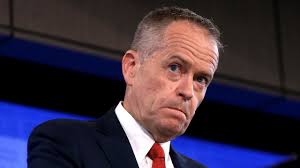Source: Urban Developer
Labor has announced a ten-year plan to build 250,000 new homes across Australia, including 20,000 during its first term in government if it wins the election.
The $6.6 billion investment would see 250,000 new homes for low income and working families, key workers such as nurses, police, carers and teachers and women over 55, the fastest emerging group of Australians at risk of homelessness.
Subsidies of $8,500 per year would be offered to investors building new homes in return for cheaper rent for eligible tenants.
Opposition leader Bill Shorten unveiled the multibillion-dollar plan in his address yesterday at Labor’s three-day national conference in Adelaide.
“Building more affordable housing is infrastructure policy. It is cities policy. It is jobs and productivity policy,” he said.
The plan would see a family paying the national rental average save up to $92 each week.
“When you provide an affordable home for hard-working people, you give them the level playing-field and fair start they need,” he said.
Shorten said Labor would work with the states and territories, local councils, and community housing providers to make sure the rollout of homes were built “where they’re needed most” and would “go to the people who need them most”.
“Not foreign investors, nor international students.”
The new homes would be accessible for all ages and for people with a disability, with Shorten describing the new homes as “more energy efficient, meaning lower power bills”, also offering a rental discount of 20 per cent.
Describing Labor as a “party of home ownership, and a party of affordable housing and community housing”, Shorten used the speech as an opportunity to call on industry super to “step up” and invest in affordable housing projects.
And of course, the opposition leader touched upon the hotly debated campaign election issue: negative gearing.
“This is a boost for renters and for the liveability of our growing suburbs… Alongside our plans to make negative gearing fairer, it will drive a boom in construction jobs and apprenticeships,” Shorten said.
A recent report published by the Australian Housing and Urban Research Institute (AHURI) found Australia needed to triple its social housing by 2036, faced with a shortfall of 433,000 social housing dwellings.
Property industry bodies welcome Labor’s announcement
Property Council chief executive Ken Morrison welcomed the incentives, but said they are “no substitute” for the supply of housing which is funded by 2.1 million property investors, “including those who access negative gearing”.
Housing affordability remains a critical issue for many Australians, an issue Morrison says is often overshadowed in the media by Melbourne and Sydney’s cooling markets.
“It makes sense to harness the investment capacity of the private sector to deliver affordable housing,” Morrison said.
“Labor’s incentives for investors to deliver affordable housing will make a contribution to meeting that need while also providing a boost to our construction industry, a key driver of economic activity.”
Planning schemes, land supply, and property taxes, which make up around 25 per cent of the cost of a new house are all part of the housing affordability mix, Morrison added, “there is no single ‘silver bullet’ solution”.
Urban Taskforce chief executive Chris Johnson said many different approaches are needed to tackle the hugely complex housing affordability issue.
“State and territory governments still have a responsibility to ensure that enough appropriately-zoned land is available in inner-ring suburbs to ensure sufficient housing supply,” Johnson said.
“Infrastructure levies must be kept under control to ensure that these do not add to the cost of housing production.”
